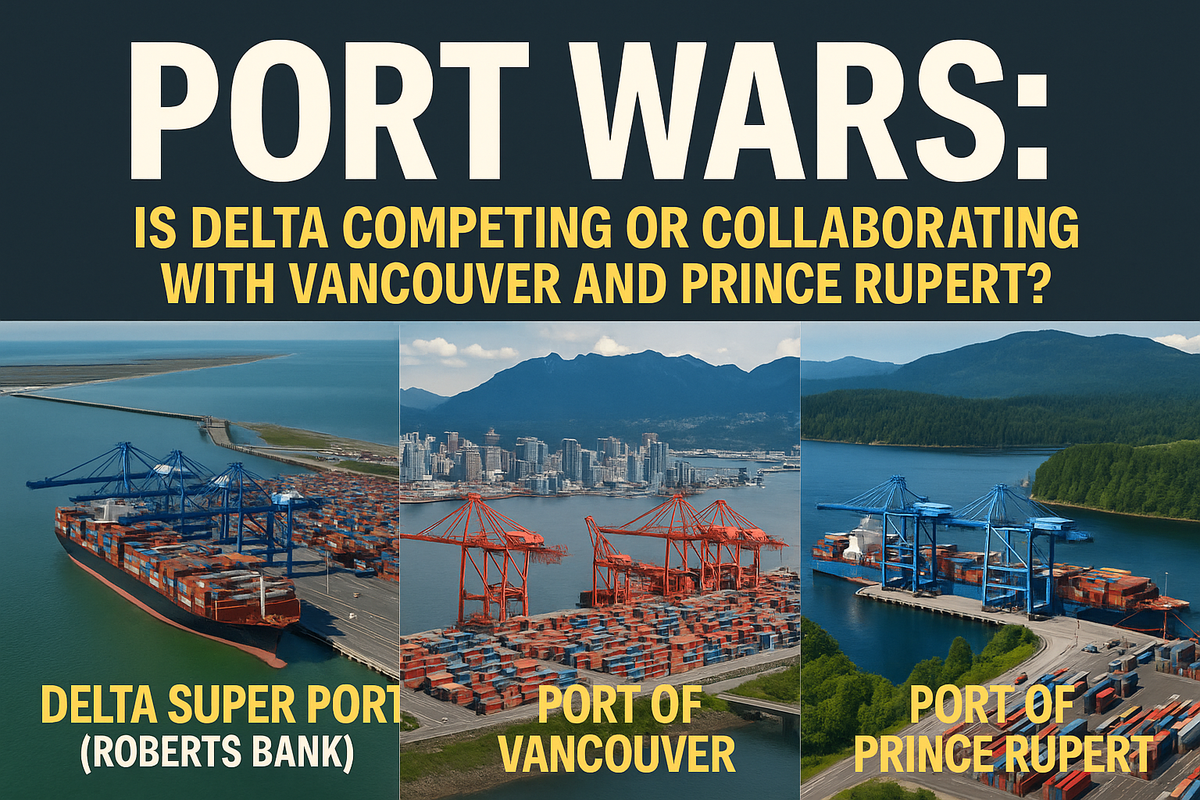
By Robert Skinner | WBN News | June 02, 2025
Subscribe For Free To WBN News: https://wbn.digital?fpr=robert10
Canada's Pacific trade infrastructure is anchored by three major ports: the Delta Super Port (Roberts Bank), the Port of Vancouver, and the Port of Prince Rupert. While each serves distinct roles, their interactions oscillate between competition and collaboration — shaping the trajectory of Canada's maritime strategy.
Distinct Strategic Advantages
- Delta Super Port (Roberts Bank): Situated in Delta, B.C., this growing hub is Canada’s most ambitious container terminal expansion. Its automation, rail access, and capacity upgrades position it to rival legacy ports in throughput and speed.
- Port of Vancouver: Canada’s largest and most diverse port remains the linchpin of national trade, handling containers, bulk cargo, breakbulk, and cruise activity. Its central location and established logistics network give it unparalleled versatility.
- Port of Prince Rupert: Closer to Asia than any other North American port, Prince Rupert offers a strategic advantage for trans-Pacific shipping. With lower congestion and rapid rail connections, it has become a favorite for time-sensitive goods.
Collaborative Efforts
Despite their overlapping interests, these ports have found ways to collaborate in times of crisis. During major disruptions — from wildfires to labor shortages — coordinated planning has kept cargo moving across the West Coast. Leadership at all three ports have called for more strategic alignment, especially around digital integration and sustainable development.
Balancing Competition and Cooperation
Each port naturally competes for contracts, shipping volumes, and investment. Yet there is a growing awareness that Canada’s long-term trade competitiveness depends on synergy, not siloed growth. Areas like digital customs processing, shared infrastructure corridors, and standardized environmental metrics are ripe for joint development.
National Stakes and Strategic Questions
As Canada continues to scale up its trade infrastructure, the interplay between Delta, Vancouver, and Prince Rupert has never been more critical. What’s at stake isn’t just throughput or market share — it’s Canada’s long-term position in global commerce.
Federal policymakers, provincial planners, and port authorities must now ask hard questions:
- Are we building a nationally coordinated port strategy, or fueling costly inefficiencies?
- Will competition between ports serve Canadian businesses — or create logistical bottlenecks?
- Can we streamline customs, environmental, and data protocols to reduce duplication?
With billions invested and global shipping patterns evolving fast, the time for passive coexistence is over. Canada needs its ports to operate as an integrated trade engine — not as rival islands of inefficiency.
📣 The Call to Action:
It’s time for a national port governance framework that balances healthy competition with shared innovation, infrastructure planning, and sustainability goals. If these ports collaborate with purpose, Canada can lead. If they don’t, others will.
Robert is an experienced business systems developer and coach. "I have openings for News Contributors for the Delta and Richmond Editions" Give me a call at +1 604-220-4750 or connect on LinkedIn: https://www.linkedin.com/in/rlskinner/
WBN News - South Delta Edition
Robert Skinner - Publisher
#WBN News - South Delta #Robert Skinner - Publisher #Delta BC #Delta Super Port #Port Of Vancouver #Port Of Prince Rupert #Canadian Trade #Maritime Strategy


